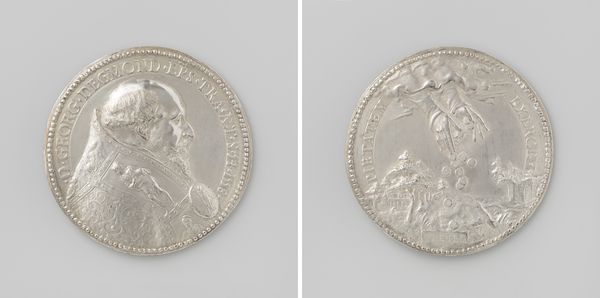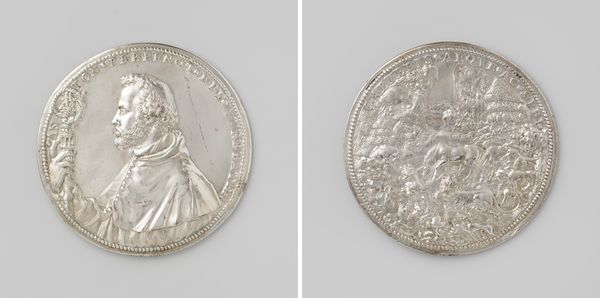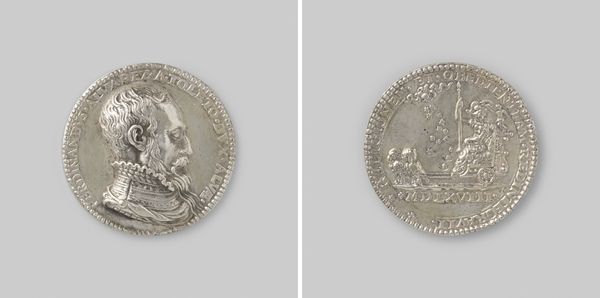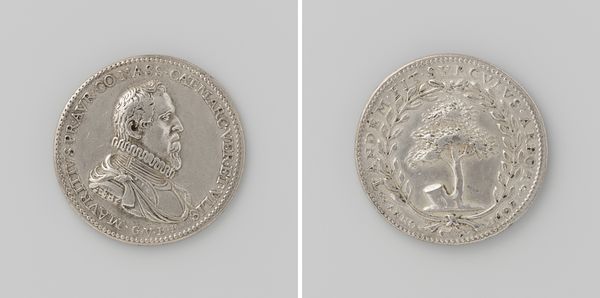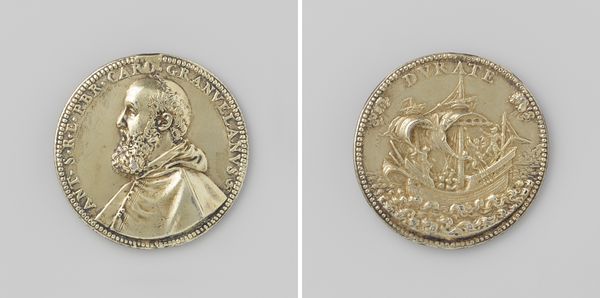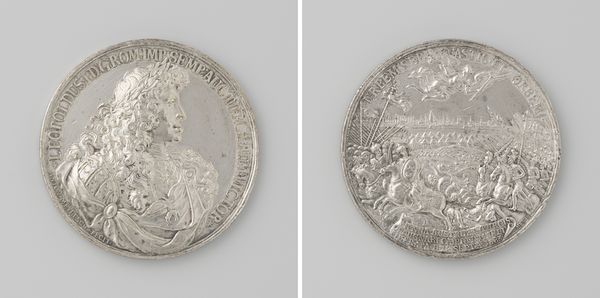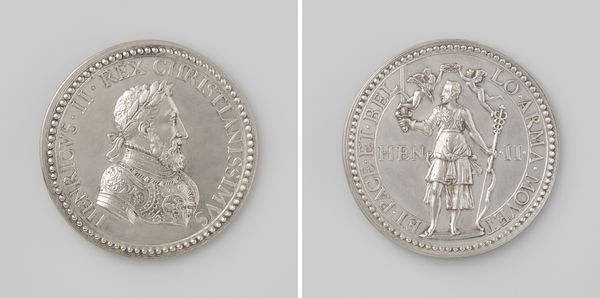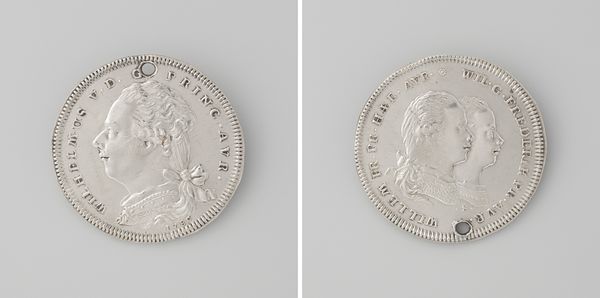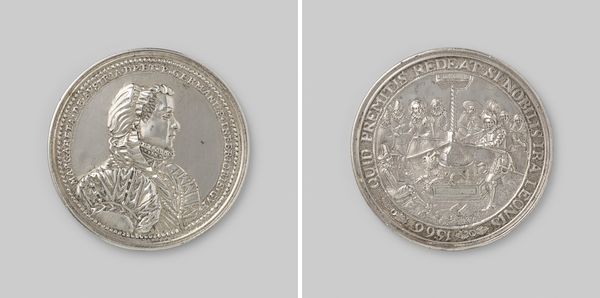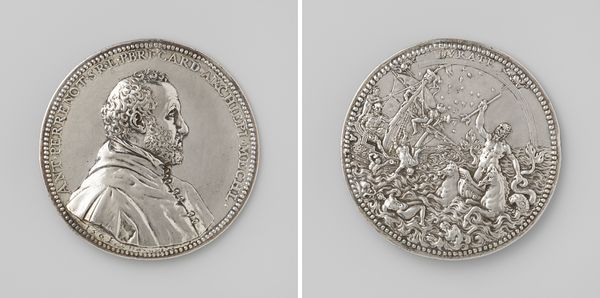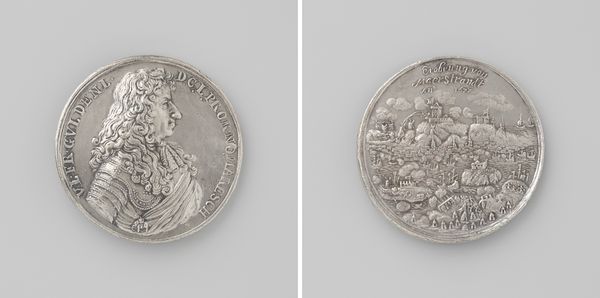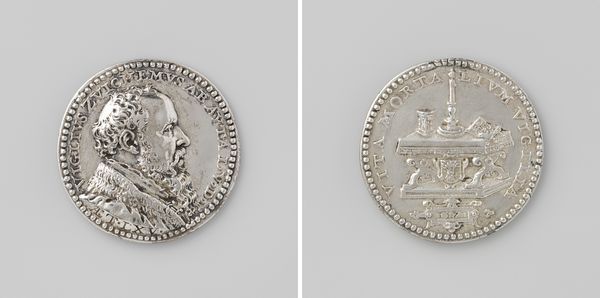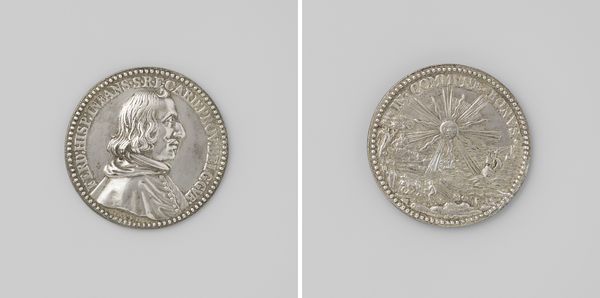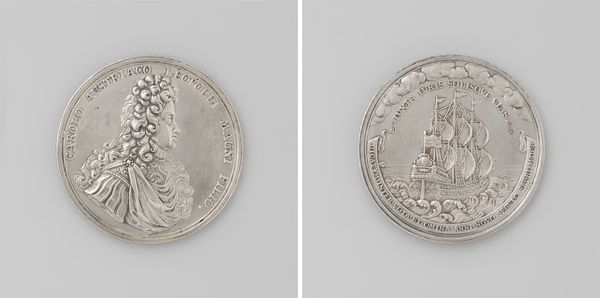
metal, relief, bronze, sculpture, engraving
#
portrait
#
metal
#
relief
#
bronze
#
11_renaissance
#
historical fashion
#
sculpture
#
history-painting
#
engraving
Dimensions: diameter 6.1 cm, weight 52.44 gr
Copyright: Rijks Museum: Open Domain
Curator: Oh, look at this remarkable piece. This is a bronze relief depicting Margaret of Parma, Governor of the Netherlands, created by Jacques Jonghelinck in 1567. Quite a statement, wouldn't you agree? Editor: A chillingly serene statement, actually. The cold gleam of the metal, the rigid formality of the pose—it all feels very calculated. Like a mask slipped on for posterity. What secrets does it hold? Curator: The politics of imagery, indeed! Margaret governed during a turbulent time, right before the Dutch Revolt exploded. The front profile shows her with her son, Alexander Farnese, and on the flip side, you have the allegorical figure of Justice trampling monsters in the Low Countries. Propaganda through art, essentially! Editor: Propaganda perhaps, but subtly so. This isn't some crude attempt at glorification. The elegance of the lettering, the intricate detail of her gown…it's crafted with undeniable skill. There's a haunting beauty even within its political messaging. I'm drawn to how small she seems—even the artist emphasizes how the environment and politics are weighing in on her. Curator: Absolutely. Jonghelinck was a master of detail. Look at how he captures the texture of fabric, the individual links of her son’s armor. Each element serves a purpose, solidifying her image as a ruler while she was battling religious and civil conflicts. This isn't just about appearance; it's about projecting authority during incredible precarity. Editor: So, in essence, this relief acts as a powerful artifact, speaking volumes about a leader and a society on the brink of immense upheaval. One sees her at war—against her citizens, as well as her son for rule, her citizens’ religion, the weather, etc. A real melting pot in so many ways. Curator: It reminds us that even seemingly static portraits can conceal intense dramas of history and humanity, forever immortalized through form. We must all learn from history in order to survive. Editor: Absolutely. To look at history in this moment in time with Margaret and ponder how we might handle such crisis as a leader—perhaps less bronze would be more wise today.
Comments
rijksmuseum about 2 years ago
⋮
Most coins have a side with a portrait, usually of a ruler. In addition, portrait medals have also always been made, primarily to honour, commemorate, or glorify an important event or person. They were often intended for a general public. Some were destined to be family heirlooms. In any case, the medallists tried to make the likenesses as realistic as possible. That is why they are considered a separate genre.
Join the conversation
Join millions of artists and users on Artera today and experience the ultimate creative platform.
